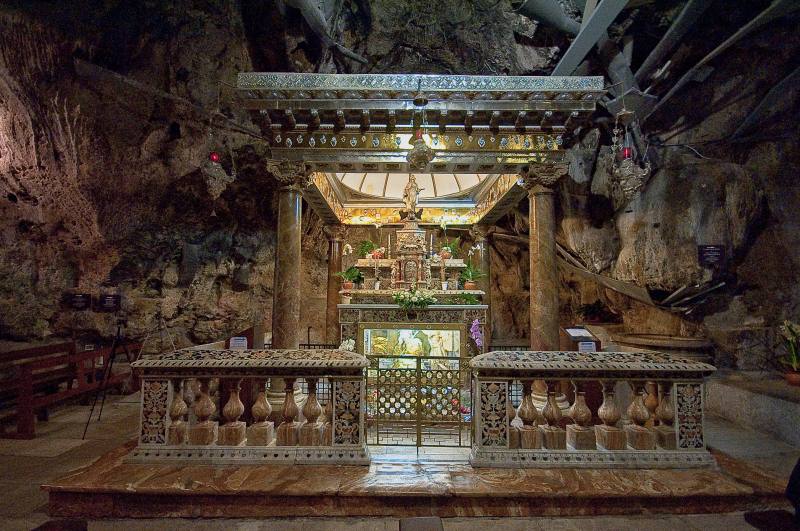The story of Santa Rosalia
Hermit and protecress of Palermo, still today is a symbol of devotion and refuge
HER LIFE
The story of Santa Rosalia begins in the Palermo court of the Norman kings.
It is in this refined medieval environment, deeply imbued with Middle Eastern influences, that we first meet the daughter of Sinibaldo, lord of Quisquina and delle Rose, and maternal niece of King Roger himself.
The young woman is one of the queen's bridesmaids; she grew up in comfort, and there is a marriage worthy of her rank in her future. It sounds like the perfect plan, if it weren't for one significant detail: Rosalia doesn't want anything to do with it.
A vision on the eve of the wedding prompted her to retreat to a convent, and shortly afterwards she decided to go and live in a tiny cave on Monte Quisquina, in her family's fiefdom, pursuing a mystical life of prayer and penance.
Soon word spread and the locals began to visit Rosalia, out of curiousity at first, and then, recognizing her religious fervour, moved by the hope that the young woman could include them in her prayers and intercede for them with God.
Many began to consider her a saint, and the number of people who asked for her intercession grew so much that it prevented her from dedicating herself solely to the adoration of God.
So Rosalia moved to Monte Pellegrino, the great mountain enclosing the Gulf of Palermo to the north. Her fame, however, followed her, and even the Palermitans were persuaded that the woman who lived in a cave on the mountain was undoubtedly a saint.
When she died, Rosalia was beatified "ex officio" by the population.
Four centuries would have to pass, however, before the Church officially followed suite.
FROM PESTILENCE TO SANCTIFICATION
In 1624 the city of Palermo was bowed by a fearsome plague against which medicine could do nothing. The people ceaselessly called upon their patron saints – Agata, Oliva, Ninfa, Cristina – but their prayers remained unheard.
This is when Rosalia intervened, revealing to a woman the place where her mortal remains were hidden. Her relics were recovered and taken to the city to be subjected to the severe scrutiny of a commission. A few months went by, then Rosalia revealed herself again, this time to a soap maker. She urged him to go to Cardinal Giannettino Doria, ask him to suspend the "disputes and doubts" about the bones and have them carried in procession.
When the relics pass by, the plague will cease, she said. And that's just how it went.
After that first, miraculous procession, many others followed.
Rosalia, finally canonized by the Church for her intervention in aid of the Palermitans, entered the hearts of her fellow citizens.
Once the four patron saints were ousted, Santuzza (little saint) became the protector of the city by popular acclaim, and she is now the object of profound and inexhaustible devotion, expressed in the festino, which includes two processions, on July 14 and 15, and in the acchianata, the ascent on foot, on the night between September 3 and 4, along the "old road" that arrives at the sanctuary built by the cave where Rosalia lived.










